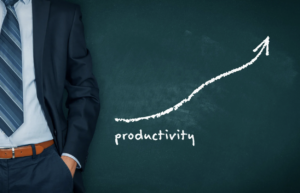Ads
The United States economy continues to be a topic of discussion and scrutiny, especially in light of recent job growth numbers released by the Bureau of Labor Statistics. In June, the US economy added a total of 147,000 jobs, surpassing expectations and resulting in a decrease in the unemployment rate to 4.1%. Despite ongoing economic uncertainties and the implementation of President Donald Trump’s tariffs, the employment market in the US appears to be holding steady.
With last month’s job growth outperforming projections, and revisions boosting the three-month average to 150,000, there is cause for cautious optimism. However, despite these positive indicators, there are clear signs of weakness and potential trouble on the horizon. Job growth is relatively limited, with only a few industries showing significant potential for growth. This trend was evidenced in the June employment numbers, with the bulk of job gains occurring in healthcare, leisure and hospitality, and state and local government sectors.
While these job gains are welcomed, there are concerns that they may not be entirely sustainable. Experts from Pantheon Economics noted that the spike in government jobs, particularly at the state and local level, may be artificially inflated. When public sector gains are excluded, private sector job growth was weaker than expected in June, with only 74,000 jobs added. Samuel Tombs, a senior US economist at Pantheon Macroeconomics, attributed this weakness to a combination of factors, including tariff hikes, restrictive monetary policy, and concerns about escalating trade wars.
The household survey revealed some troubling trends, including a decrease in the labor force participation rate and a notable increase in Black unemployment. The latter rose to 6.8%, its highest rate since January 2022, which could be a signal of an economic downturn. Economists are also monitoring wage growth, which was lower than anticipated in June. While average hourly wages increased slightly, the annual growth rate dipped to 3.7% from 3.9%.
Despite the positive aspects of the jobs report, questions remain about the overall health of the economy and the potential impact of Trump’s economic policies. Uncertainty surrounding tariffs, trade wars, and the broader economic landscape may be contributing to a slowdown in hiring and overall economic growth. However, while layoffs remain low and the stock market experienced gains following the release of the job numbers, concerns persist about the future trajectory of the US economy.
The Federal Reserve is closely monitoring economic data, particularly in light of the current uncertainties. While the Fed had been expected to lower interest rates, concerns about inflation, impacts of tariffs, and slowing labor force growth have led to a cautious approach. Analysts and economists are closely watching key indicators, such as job growth, inflation, and labor force participation, to gauge the overall health of the economy and determine future policy decisions.
In conclusion, while the latest job numbers may have exceeded expectations, there are clear signs of underlying weakness and uncertainty in the US economy. With ongoing concerns about trade policies, tariff impacts, and slowing labor force growth, the road ahead remains uncertain. It will be essential for policymakers, economists, and businesses to closely monitor economic data and trends to navigate potential challenges and opportunities in the months and years ahead.






